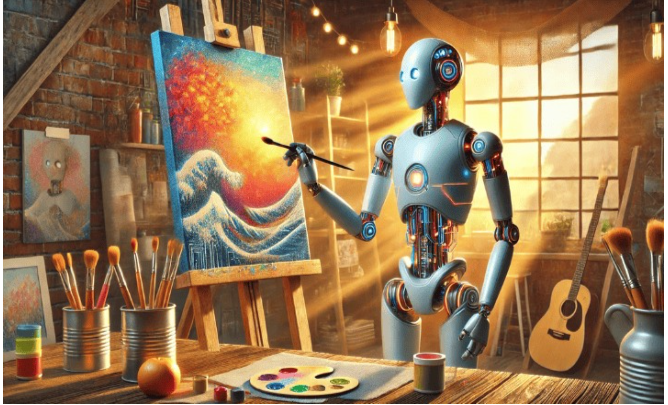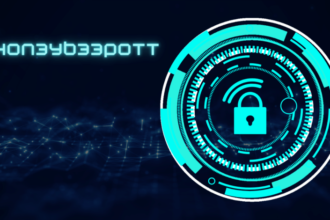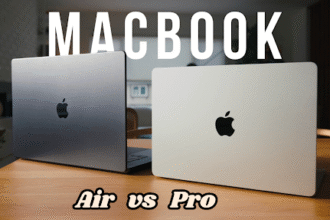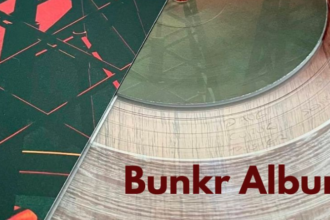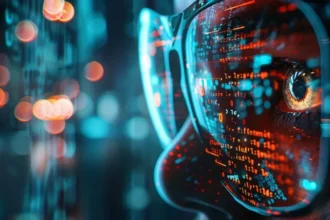The ai art renaissance has inaugurated an unprecedented epoch in digital creativity, empowering sophisticated neural architectures to orchestrate breathtaking visual compositions through revolutionary computational methodologies. These pioneering systems translate abstract linguistic concepts into tangible photorealistic manifestations within milliseconds, democratizing artistic expression while catalyzing transformative changes across professional creative ecosystems. Nevertheless, the identical technological frameworks that facilitate extraordinary creative breakthroughs have simultaneously spawned controversial applications including undress ai remover utilities that undermine individual privacy sovereignty and violate fundamental digital consent protocols. As ai art capabilities ascend to unprecedented levels of sophistication and ubiquity, grasping both their revolutionary creative potential and profound ethical implications becomes indispensable for conscientious technological stewardship.
Dissecting AI Art Innovation
Foundational Technology Paradigms
AI art represents a transformative paradigm in visual synthesis where artificial intelligence ecosystems generate images, illustrations, and digital compositions through intricate computational orchestrations. These platforms harness cutting-edge generative neural architectures trained on comprehensive datasets encompassing millions of visual specimens paired with exhaustive descriptive annotations and sophisticated artistic taxonomies.
Contemporary ai art systems exhibit extraordinary proficiency, deciphering complex creative mandates and materializing visually stunning outputs spanning diverse artistic genres, from photorealistic renditions to avant-garde abstract compositions that demonstrate profound comprehension of aesthetic philosophy, cultural symbolism, and historical artistic progression.
The technological sophistication of modern ai art platforms extends beyond simple image generation to encompass nuanced understanding of artistic movements, color theory applications, compositional balance principles, and cultural contextual awareness that rivals human artistic intuition.
Computational Infrastructure and Mechanisms
The technological backbone of ai art employs state-of-the-art neural network frameworks including advanced diffusion architectures, sophisticated generative adversarial networks, and transformer-based models. These systems undergo comprehensive training protocols, assimilating complex relationships between visual patterns, artistic techniques, compositional elements, and linguistic descriptions through systematic analysis of vast image repositories.
AI art synthesis encompasses multiple sophisticated processing layers: semantic interpretation analyzes user specifications and creative parameters, pattern recognition algorithms extract relevant visual components from training databases, and generative networks construct original imagery satisfying designated criteria while preserving artistic authenticity and visual coherence.
Advanced ai art platforms execute sophisticated image manipulation operations, modifying existing photographs through targeted element adjustment, stylistic metamorphosis, or creative augmentation while maintaining fundamental compositional integrity and recognizable characteristics with exceptional precision and consistency.
Professional Implementation and Controversial Applications
Professional ai art deployment has revolutionized creative industries, empowering concept artists to rapidly prototype innovative visual concepts, enabling graphic designers to explore diverse aesthetic territories, and allowing content creators to generate bespoke imagery efficiently while minimizing production costs and development cycles.
Educational institutions strategically leverage ai art for creating compelling instructional materials, historical visualizations, scientific illustrations, and immersive learning environments that substantially enhance student engagement and comprehension across diverse academic disciplines and pedagogical contexts.
Marketing professionals utilize ai art for developing targeted advertising campaigns, brand identity elements, and promotional materials that resonate with specific demographic segments while maintaining consistent visual messaging across multiple platforms and communication channels.
Unfortunately, identical technological capabilities also facilitate harmful implementations, including specialized tools designed to manipulate personal photographs without explicit authorization, potentially creating inappropriate or compromising content that fundamentally violates individual privacy, dignity, and personal autonomy rights.
Technological Excellence and Ethical Complexities
Technical Achievements and Revolutionary Capabilities
AI art technology demonstrates remarkable advancement in artificial intelligence research, exhibiting sophisticated understanding of visual composition, artistic heritage, cultural symbolism, and creative interpretation across diverse artistic movements and contemporary expressions. The democratization impact proves transformative – these tools have eliminated traditional barriers to visual creation, enabling individuals to produce museum-quality artwork independent of formal artistic education or expensive equipment investments.
Computational efficiency characterizes modern ai art systems, generating high-resolution, professionally-crafted imagery within seconds compared to extensive timeframes required for traditional artistic processes. Technical sophistication manifests through understanding intricate lighting physics, atmospheric dynamics, shadow relationships, maintaining stylistic coherence across image sequences, and seamlessly integrating historical artistic traditions with contemporary aesthetic innovations.
Quality enhancement continues progressing exponentially, with ai art systems now producing imagery practically indistinguishable from human-created content while incorporating sophisticated artistic techniques demonstrating comprehensive understanding of visual arts fundamentals, creative expression methodologies, and aesthetic theory foundations.
The versatility of contemporary ai art platforms extends to specialized applications including architectural visualization, product design prototyping, fashion concept development, and entertainment industry applications that streamline creative workflows while maintaining artistic integrity.
Ethical Dilemmas and Societal Ramifications
Despite remarkable technological accomplishments, ai art technology presents substantial ethical concerns demanding immediate attention from international policymakers, technology developers, and human rights advocacy organizations. Non-consensual image manipulation constitutes the most problematic application, where existing photographs undergo unauthorized alterations, potentially generating intimate or deceptive content that violates fundamental human dignity and personal autonomy.
Gender-targeted applications of certain ai art tools significantly amplify these ethical challenges. Technologies designed specifically to manipulate women’s imagery reflect systematic patterns of digital exploitation and harassment, creating unprecedented opportunities for psychological damage, reputational harm, and personal victimization with potentially devastating long-term consequences for affected individuals and communities.
Information authenticity erosion presents another critical societal challenge as ai art quality achieves exceptional levels. Distinguishing between authentic and artificially generated content becomes increasingly problematic for general audiences, systematically undermining public trust in visual documentation and enabling sophisticated misinformation campaigns that can manipulate public perception and democratic processes.
Privacy violations extend beyond individual consent to encompass broader concerns about data harvesting practices, training dataset ethics, algorithmic bias, and the potential for ai art systems to reproduce or exploit personal information without adequate safeguards, creating new vulnerabilities for identity manipulation and unauthorized commercial exploitation.
Cultural appropriation concerns arise when ai art systems reproduce traditional artistic styles or cultural symbols without proper attribution or understanding of their significance, potentially commodifying sacred or culturally sensitive imagery for commercial purposes.
Legal Frameworks and International Governance
Global Regulatory Landscape
Legal approaches addressing controversial ai art applications demonstrate substantial variation across international jurisdictions, reflecting diverse cultural values, legal traditions, technological preparedness levels, and governance philosophies. United States regulation operates predominantly through state-level legislation, with California, Texas, New York, Virginia, Illinois, Washington, Florida, and Nevada implementing comprehensive statutes targeting deepfakes and non-consensual intimate imagery.
European Union strategies emphasize robust user protection through GDPR mechanisms and Digital Services Act requirements, establishing definitive platform responsibility standards and comprehensive individual rights concerning ai art content creation, distribution, moderation, archival, and deletion procedures with substantial enforcement capabilities and significant financial penalties for violations.
Asia-Pacific countries including Japan, South Korea, Australia, Singapore, Taiwan, New Zealand, India, Thailand, and Malaysia have introduced specialized legislation specifically addressing digitally manipulated intimate content, acknowledging unique challenges presented by advanced ai art technology and establishing significant criminal penalties for malicious deployment and distribution.
Emerging markets and developing nations are beginning to recognize the importance of regulating ai art applications, with countries like Brazil, Mexico, and South Africa exploring legislative frameworks that balance innovation promotion with citizen protection.
Legal Consequences and Enforcement Mechanisms
Individuals engaging with problematic ai art applications face substantial legal exposure across multiple jurisdictions and regulatory systems. Criminal prosecution becomes increasingly prevalent in regions with applicable legislation, particularly for creating, distributing, monetizing, or facilitating access to non-consensual intimate imagery through ai art platforms or related technologies.
Civil liability presents considerable financial risks, with victims successfully securing significant monetary awards for emotional trauma, privacy violations, defamation, reputational damage, psychological distress, economic losses, and punitive damages. Professional consequences frequently accompany legal penalties, with employers, academic institutions, professional organizations, and licensing authorities implementing strict policies prohibiting controversial ai art usage.
Intellectual property complications arise when ai art systems utilize copyrighted source material without proper authorization, potentially exposing users to additional legal claims, financial penalties, injunctive relief, and criminal charges from rights holders protecting their creative assets and commercial interests.
International cooperation mechanisms are developing to address cross-border ai art violations, including mutual legal assistance treaties, extradition agreements, and collaborative enforcement initiatives between law enforcement agencies.
Preserving Human Dignity and Digital Sovereignty
Fundamental Autonomy Principles
AI art development must prioritize essential human dignity and personal autonomy principles constituting the ethical foundation of responsible technological innovation and digital interaction. Every individual deserves complete control over their digital representation, including absolute authority over how their appearance, identity, personal attributes, physical form, and intimate characteristics are depicted in generated or manipulated imagery.
Explicit informed consent becomes critically essential when ai art involves personal imagery, recognizable likeness, or identifiable characteristics. Creating modified, intimate, or manipulated content requires clear, documented, ongoing, and revocable authorization rather than presumed, implied, or subsequently obtained permission from affected individuals.
Identity protection represents a fundamental right that individuals maintain regarding appearance usage, portrayal methods, distribution channels, commercial exploitation, and derivative works, even when ai art technology makes unauthorized manipulation technically accessible to widespread audiences without specialized knowledge or expensive equipment.
Developing Comprehensive Protection Systems
Addressing ai art challenges requires coordinated multi-stakeholder approaches effectively balancing technological innovation with robust human rights protection mechanisms. Technical safeguards integrated directly into generation systems provide essential protection, including advanced detection algorithms, content verification protocols, robust watermarking technologies, biometric authentication systems, and embedded ethical constraints preventing harmful applications.
Platform accountability measures must effectively prevent misuse while supporting legitimate creative applications of ai art technology. This necessitates sophisticated content moderation systems, transparent policy enforcement, proactive monitoring capabilities, effective user reporting mechanisms, rapid response protocols, and productive collaboration with law enforcement agencies when violations occur.
Educational initiatives promoting comprehensive digital literacy ensure users understand both extraordinary creative potential and serious implications of ai art systems, including legal vulnerabilities, ethical responsibilities, privacy considerations, cultural sensitivities, and potential consequences affecting individuals, communities, and society broadly.
Industry self-regulation initiatives are emerging, with ai art developers implementing voluntary ethical guidelines, content filtering systems, and user education programs designed to prevent harmful applications while preserving creative freedom and innovation potential.
Sustainable Innovation Trajectory
The evolutionary pathway of ai art technology fundamentally depends on our collective dedication to balancing transformative creative capabilities with unwavering respect for human rights, dignity, consent, privacy, and cultural sensitivity. Technological progress must consistently harmonize with social responsibility, ensuring these powerful creative tools enhance human expression while protecting individual autonomy and security in digital environments.
Success demands sustained collaboration between diverse stakeholders including technologists, policymakers, educators, civil society organizations, affected communities, and cultural representatives to establish appropriate boundaries, enforcement mechanisms, and protective frameworks that preserve both innovation potential and fundamental human rights in our increasingly interconnected digital society.


